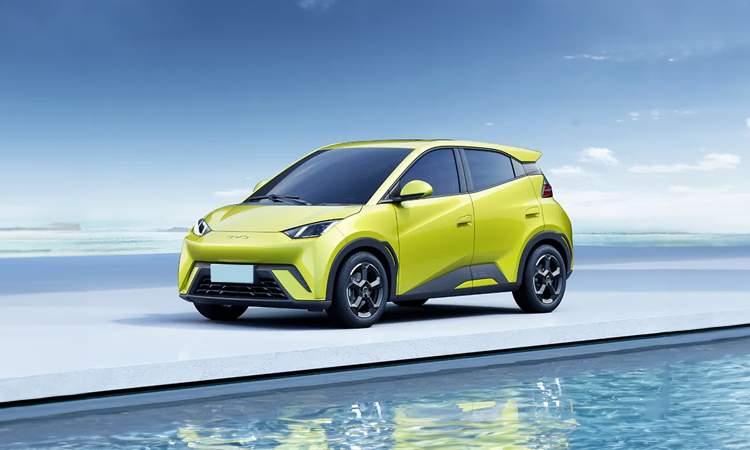
बीयेडी सील EV
बीयेडी सील EV ब्यौरा
The electric sedan gets substantial upgrades under the skin and now sits on the company's new 800Ve-Platform 3.0 EVO architecture.BYD has unveiled a heavily updated Seal electric sedan in global markets. While on the surface little looks different the sedan has undergone substantial updates including moving to a new 800V architecture from the current 400V and LiDAR tech.
Exterior styling is near untouched for the 2025 model with notable changes being the new alloys and the LiDAR sensors on the roof.
In terms of styling, you’ll be hard-pressed to see any styling updates. The headlamps, tail lights and the general body shape are all unchanged with the only notable changes coming in the form of the alloy wheels and the LiDAR sensors mounted on the roof. Open the doors and it’s a different story with a heavily redesigned cabin replete with a new look dashboard, new door cards and upholstery stitching and designs.
The dashboard design now falls in line with other models under the Seal family with the instrument cluster display now housed within a flat vertical panel spanning the width of the dashboard. The steering is a new four-spoke unit while the large central touchscreen remains a free-standing unit and can still be rotated between landscape and portrait orientations. The door cards too are redesigned with extensive use of soft-touch materials that also extends onto the lower dashboard. The seats are carried over from the outgoing model though they feature new upholstery patterning.
The biggest change however is under the skin where the e-Platform 3.0 makes way for the new e-Platform 3.0 EVO which debuted earlier this year in the BYD Sea Lion 07 electric SUV. The new platform means that the Seal EV is now underpinned by an 800V architecture enabling even faster charging speeds. BYD claims that the new Seal can be juiced up from 10 to 80 per cent in just 25 minutes. The outgoing model meanwhile had a claimed 10-80 per cent charge time of 37 minutes.
Moving to the powertrain, the new Seal is offered with two battery packs - 61.44 kWh and 80.64 kWh, and in rear and all-wheel drive configurations. There are two rear-wheel-drive (RWD) powertrains to pick from - a base 228 bhp and 380 Nm output configuration and a more powerful 308 bhp variant though torque remains steady at 380 Nm. The all-wheel drive model meanwhile mumps up the output to 523 bhp and 690 Nm.
Interestingly this makes the base model 27 bhp and 70 Nm more powerful than before with the 0-100 kmph sprint time down by 1 second to 6.5 sec. The mid-spec RWD model now makes 20 Nm more than before while the top AWD variant’s output is unchanged. The 0-100 kmph sprint times of the two variants also remain unchanged.
The new Seal EV comes with either a 61.44 kWh or 80.64 kWh (down from 82.56 kWh) battery pack depending on the variant. BYD says that the new Seal has a CLTC range of up to 650 km depending on the powertrain configuration - down from 700 km previously.
Moving to the suspension, frequency selective damping is now standard on the Seal - it was previously only offered on the top AWD variant. The range-topping model now gets the company’s Yunnian-C Intelligent Damping Body Control System which is claimed to actively adjust the suspension settings to minimise body movement and enhance vehicle stability and occupant comfort.
In terms of tech, the addition of LiDAR sensors brings with it a whole host of new ADAS functions. These include an autonomous parking function and assisted self-driving capabilities on the highway and in the city.
The upgraded BYD Seal has currently gone on sale in its home market of China with a launch in other markets expected in the coming months. The updated model could arrive in India in 2025 though it remains to be seen if the India-spec model will benefit from the full range of LiDAR-based tech.
Other Upcoming BYD Models are the New Atto 3 EV, Seagull and Xia
बीयेडी सील EV न्यूज़

बीयेडी डीलर & शोरूम
- पत्रिका
- नई कारें
- बीयेडी कारें
- बीयेडी सील EV







